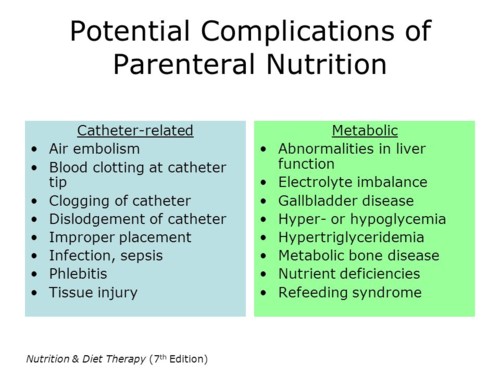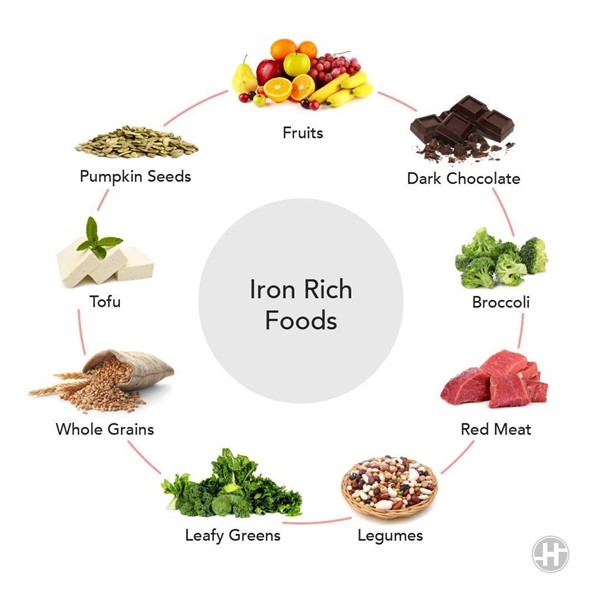While caring for a client receiving total parenteral nutrition (TPN), it is most important for the nurse to monitor which of the client's lab values?
Urinary ketones.
Serum protein.
Serum osmolarity.
Capillary glucose.
The Correct Answer is C
Choice A
Urinary ketones are not most important. Monitoring urinary ketones can provide information about the utilization of glucose and fat as energy sources. However, it is not the primary lab value to monitor in TPN administration.
Choice B
Serum protein is not most important. Monitoring serum protein levels is important to assess nutritional status, but it might not be as immediate a concern as serum osmolarity.
Choice C
Serum osmolarity is the most important. When caring for a client receiving total parenteral nutrition (TPN), monitoring serum osmolarity is most important. TPN is a highly concentrated solution containing various nutrients, and it is infused directly into the bloodstream. Serum osmolarity reflects the concentration of particles (such as electrolytes, glucose, and other solutes) in the blood. Monitoring serum osmolarity is crucial to prevent complications related to fluid and electrolyte imbalances that can arise from the administration of TPN.
Choice D
Capillary glucose is not the most important. Monitoring capillary glucose levels is important, especially in clients receiving TPN with added glucose. Hyperglycaemia is a potential complication of TPN. While glucose monitoring is important, it is secondary to monitoring serum osmolarity, which encompasses a broader range of solute concentrations.

Nursing Test Bank
Naxlex Comprehensive Predictor Exams
Related Questions
Correct Answer is B
Explanation
Choice A
Describing the value of eating smaller portion sizes is not appropriate. While portion control is important, this advice alone might not address the overall dietary quality and exercise component necessary for effective weight loss.
Choice B
Encouraging a well-balanced diet and moderate exercise is appropriate. This intervention focuses on promoting healthy and sustainable weight loss. A well-balanced diet helps ensure that the client is getting all the necessary nutrients while aiming for a calorie deficit for weight loss. Moderate exercise complements dietary changes and contributes to overall health and weight management.
Choice C
Exploring the reasons, the client wants to lose weight is inappropriate. While understanding the client's motivations is valuable, this doesn't directly provide guidance on how to achieve the goal of losing 10 pounds.
Choice D
Determining if the client has a history of anorexia is inappropriate. While assessing for eating disorders is important in general, assuming there's no indication of anorexia, the focus should be on providing guidance for safe and effective weight loss.
Correct Answer is A
Explanation
Choice A
Broccoli is appropriate recommendation. Given the client's history of iron deficiency anaemia and the current haemoglobin level below the reference range, it's important to recommend foods that are good sources of iron. Among the options provided, broccoli is the most suitable choice. Iron from plant-based sources (non-heme iron) might be less easily absorbed than iron from animal sources (heme iron), but combining them with foods high in vitamin C can enhance iron absorption. Broccoli is a vegetable that contains both iron and vitamin C, making it a favourable choice to support the client's iron intake and help address the anaemia.
Choice B
Carrots are inappropriate. While carrots are a nutritious vegetable, they are not particularly high in iron.
Choice C
Cheddar cheese is inappropriate. Dairy products like cheddar cheese are not significant sources of iron.
Choice D
Whole milk is inappropriate. Whole milk is not a significant source of iron either. Additionally, calcium in milk might hinder iron absorption if consumed together.

Whether you are a student looking to ace your exams or a practicing nurse seeking to enhance your expertise , our nursing education contents will empower you with the confidence and competence to make a difference in the lives of patients and become a respected leader in the healthcare field.
Visit Naxlex, invest in your future and unlock endless possibilities with our unparalleled nursing education contents today
Report Wrong Answer on the Current Question
Do you disagree with the answer? If yes, what is your expected answer? Explain.
Kindly be descriptive with the issue you are facing.
